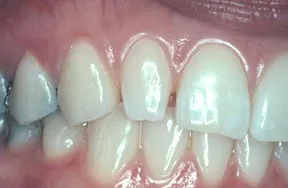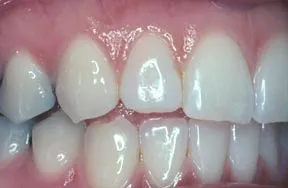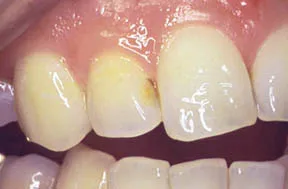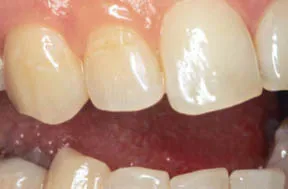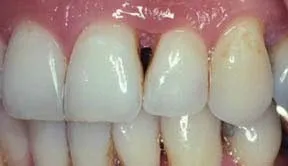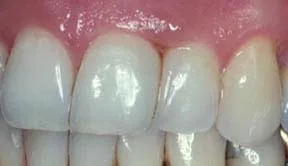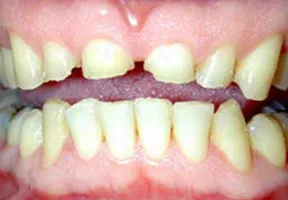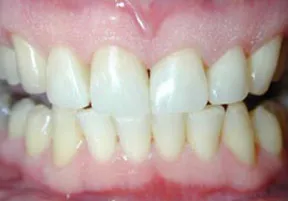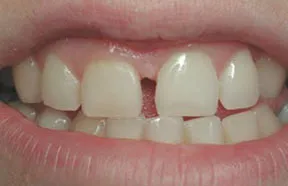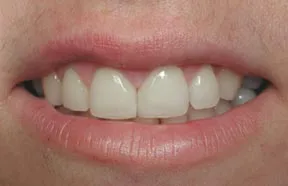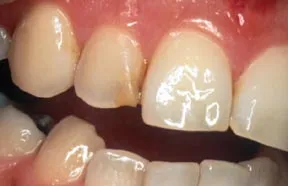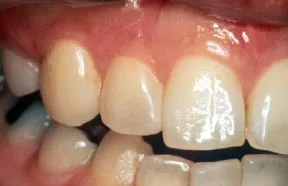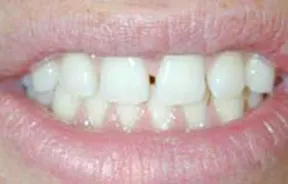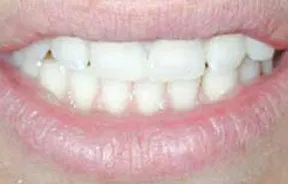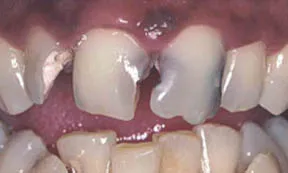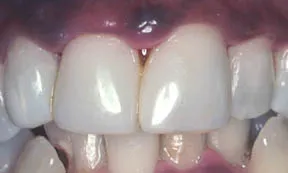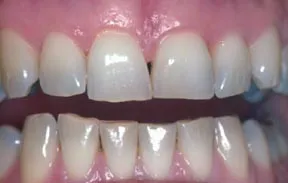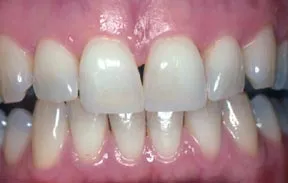Bonding Gallery
Bonding is a process used to restore chipped, discolored, and misshapen teeth in a single visit. The results are very natural in appearance, but bonding does take more maintenance than porcelain veneers and may not last as long. Less tooth structure needs to be removed, which makes bonding a more conservative choice for some cases.
Bonding Gallery Case
Before:
This tooth has a developmental defect, which is called a peg lateral. This only occurs in the lateral teeth, one tooth away from the center-line of the mouth on each side. There is nothing wrong with the tooth but the patient wanted to have it treated for cosmetic reasons.
After:
The treatment consisted of shaping the tooth with a composite material to make it look more natural. This procedure took one appointment and was done without any anesthetic. Periodic polishing will help maintain the shine and luster of this restoration for many years.
Before:
This is an old tooth-colored filling that has been in place for many years and needs to be replaced because of discoloration as well as wear. The wear may allow bacteria to enter and cause decay if the filling is not replaced.
After:
The filling has been replaced with a newer tooth-colored filling that should last for many years. This restoration was completed in one office visit.
Before:
This patient was unhappy with the space between two of her teeth. This was the result of a periodontal (gum) defect between the teeth.
After:
Composite, which is a tooth-colored material, was bonded to both of the teeth. This procedure took one office visit. The result was a more aesthetically pleasing appearance and it gave the patient confidence to smile again.
Before:
This patient had severely chipped teeth and wanted them fixed as soon as possible. The options were porcelain veneers, porcelain crowns, or composite veneers. One of the advantages of bonding is that it can usually be completed in one visit.
After:
The patient chose to go with the composite veneers, which are hand sculpted and bonded in place, because they were the least expensive treatment option. They do have the shortest life expectancy and need periodic polishing, but if they properly cared for, they can last for many years.
Before:
This patient was unhappy with two issues: the space between her upper front teeth and the different heights of the gum tissue above her teeth, which made the teeth appear to be of different lengths.
After:
Step one of her treatment was to even out the height of the gum tissue. After healing, which took several weeks, the space, which dentists call a diastema, was closed using composites bonded to her teeth. The total number of treatments was two; one for the gum tissue and one for the bonding and the result was exactly what the patient had in mind.
Before:
The lateral, or side tooth, had an old tooth-colored filling that was showing its age. Older composites were much more porous than the newer composites and, therefore, they show more discoloration over time.
After:
In one office visit, the old filling was removed and replaced with new composite bonding material. The result is a much morhe result was exactly what the patient had in mind.
Before:
This patient did not like the natural gap between his two front teeth.
After:
Composite bonding was placed in one office visit. Bonding takes periodic touch-ups to keep it looking like new.
Before:
The dark areas on the teeth are indicative of severe decay caused by neglect. All of the decay must be removed before any restoration of the teeth can begin.
After:
After all the decay was removed, the teeth were restored with composite bonding in one appointment. The ideal treatment plan would have been to place porcelain crowns, but it was not an option due to the patient’s finances. The patient was very happy with the results.
Before:
This patient was not happy with the color of her teeth. She also disliked the worn edges of her top teeth, related to her teeth-grinding habits.
After:
First, the patient’s teeth were lightened with an at-home whitening process. When she was satisfied with the color, composite bonding was added to the edges to restore the natural tooth structure that was lost due to grinding.

